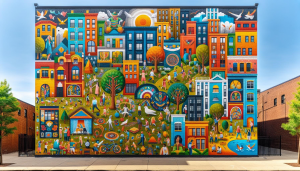Ever wonder why your city’s laid out the way it is? Why the same kind of shops huddle together? Or why some neighborhoods are all single-family homes? Chances are, zoning laws are the reason. These rules, often unnoticed, have incredible power. They shape everything from how affordable housing is to traffic patterns, and the very feel of our communities. I’m an urban designer. I spent years at firms like SOM, and now I run my own practice, Vance Urban Collaborative. I’ve seen firsthand how these laws can both help and hurt when it comes to creating lively, fair urban spaces.
Zoning: From Nuisance Control to Shaping Society
Zoning’s history? Surprisingly practical. Back in the early 20th century, it was all about keeping clashing things apart. Think factories spewing smoke next to houses. Early rules, like New York City’s groundbreaking 1916 resolution, focused on keeping people safe and healthy.

But over time, zoning became more complex. It became a tool to shape society, sometimes with unintended consequences.
The Upside: Order and Protection
Let’s be clear: zoning isn’t always the bad guy. When it’s done right, it brings order to the chaos of a city. It can shield homes from industrial pollution, make sure there’s enough green space, and prevent overcrowding. Density rules, for example, can keep traffic flowing and prevent infrastructure from being overloaded. That’s definitely a good thing. Good zoning can also help create unique community identities. Think of historic districts, carefully protected by zoning that keeps the architecture consistent.
The Downside: Exclusion and Sprawl
But zoning does have a dark side. Restrictive zoning, especially exclusionary zoning, has fueled housing shortages and segregation. For example, large-lot zoning effectively makes it impossible for lower-income families to afford homes, limiting their options to the wealthy. Minimum parking requirements drive up construction costs and encourage driving, which leads to urban sprawl. Height restrictions can limit density, pushing development outward and increasing commute times. These policies, often sold as protecting “neighborhood character,” can have deeply unfair results.
Exclusionary Zoning: A Legacy of Inequality
Exclusionary zoning isn’t just some abstract idea; it has real-world consequences. Look at the history of single-family zoning in many American suburbs. These policies, often put in place with the explicit goal of discrimination, reinforced racial segregation and limited opportunities for marginalized groups. The effects are still felt today, contributing to wealth gaps and limiting social mobility. Richard Rothstein’s book, “The Color of Law,” argues that government policies, including zoning, played a major role in creating and maintaining residential segregation.
I’ve witnessed this firsthand in many communities, where seemingly harmless zoning rules perpetuate deep inequalities.
Zoning for a Sustainable Future
The good news? The conversation around zoning is changing. We’re starting to realize it can be a powerful tool for creating sustainable urban development. Mixed-use zoning, for instance, allows for a mix of homes, businesses, and even light industry in the same area. This reduces the need to drive, promotes walking, and creates more lively, resilient communities. Form-based codes are another promising approach. They focus on the physical appearance of buildings rather than their use, allowing for more flexibility and creativity in urban design.
Zoning also has a big impact on property values. Regulations that allow for higher densities or mixed-use developments can increase property values in some areas, while restrictions can limit growth and potentially lower values. Understanding these dynamics is key for both developers and homeowners.
Zoning Reform: A Sign of Hope
Cities across the country are experimenting with zoning reforms to tackle affordability, sprawl, and inequality.
For example, Minneapolis eliminated single-family zoning citywide – a bold move aimed at increasing housing density and promoting inclusivity. California has passed laws to streamline the approval process for accessory dwelling units (ADUs), also known as “granny flats,” which can add much-needed housing to existing neighborhoods.
These reforms aren’t perfect, but they’re a crucial step toward creating more sustainable and equitable urban environments. We need to take a hard look at the results of these reforms, both good and bad, to guide future policy decisions.
The key is to keep the conversation going, with planners, policymakers, developers, and community members all working together.
Time to Collaborate
The future of our cities depends on whether we’re willing to rethink zoning. We need to move beyond outdated, rigid rules and embrace more flexible, innovative approaches that prioritize affordability, sustainability, and social equity. This requires a fundamental shift in mindset – from seeing zoning as a tool for control to seeing it as a way to foster vibrant, inclusive communities. It’s time for urban planners, policymakers, and engaged citizens to work together to create zoning laws that build a better future for all. The conversation needs to be ongoing, informed by data, and grounded in a deep understanding of the human impact of these often-invisible rules.


